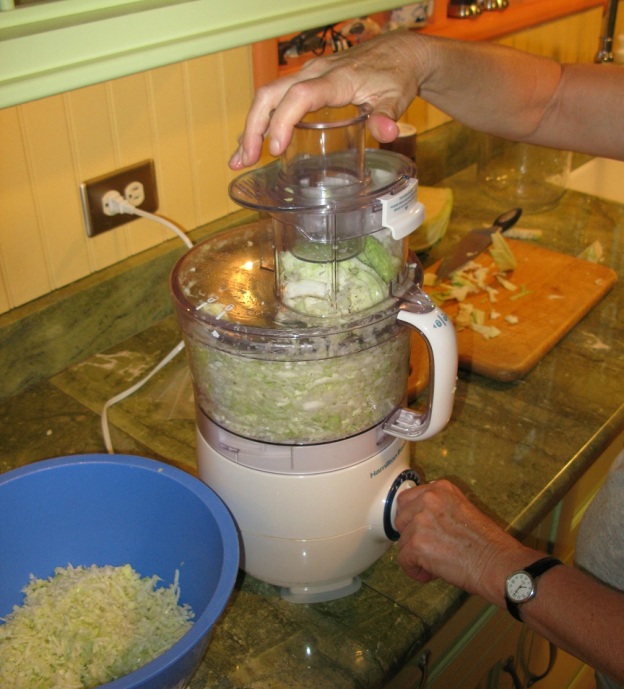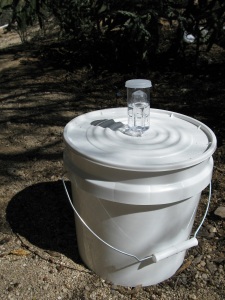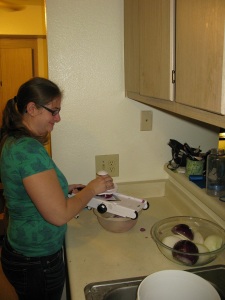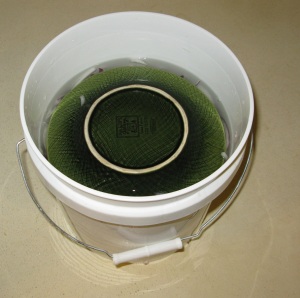I love sauerkraut. Besides its delicious taste and many health benefits, it is also, in a way, the reason that I began this blog.
…
It all started several years ago, when I was not working and bored out of my skull. In an effort to be productive, I started making some of my own food. I baked some bread, and posted the effort on my social media. I caught and cooked fish, and shared that. Then I made sauerkraut.
This involved a lot of explanation and photos, and by the time I was done, I had a small story posted on my social media page. I decided then that a blog would be a better platform for sharing my adventures, so I started writing longer stories, with more pictures, and The Homesteading Hippy was born.
…
Fast forward a few years, and I may be neglecting my blogging duties, but my adventures continue.
I would like to interject here with a shout-out to the grandfather of modern sauerkraut, Genghis Kahn of Mongolia. Besides possibly being a direct ancestor to one out of every twenty of us in the world (more like one in ten in Europe), he is also responsible for a major culinary tradition. While people have been fermenting vegetables for a long time, Sauerkraut the way we think of it today was unheard of in Europe until dear Genghis, according to one form of the story, introduced it from Asia, where it had originally been invented in China.
During a recent visit to my parents, who inspired my interest in home-grown food (see their beekeeping blog here), my mother and I decided to make sauerkraut. She had received a fermentation jar with an airlock, and the first batch of sauerkraut had turned out wonderfully. But, as it had run out some time back, it was time to make more. We tried a slightly more advanced recipe this time, using a German-inspired recipe.
It turns out that while Sauerkraut is loved throughout northern and eastern Europe, as well as parts of Asia, each region has its own traditional recipes. In eastern Europe, for example, they make a slightly sweeter variant that also includes shredded carrots. In Korea, there is kimchi (a whole other monster; I love it, but it’s not for everyone). In Germany, one of the local ingredients is juniper berry.
Off we went to the local health food store, bought a cabbage and a few tablespoons of juniper and carraway, and went to work.
We first mixed the spices with a rather large amount of salt. For five pounds of cabbage, we used 1/3 cup salt, a tablespoon of juniper berries, and ½ tablespoon of carraway seeds. As I have mentioned in previous posts, salt creates an environment in which the only organisms that can thrive are the lactic acid bacteria that we want. They will ferment the cabbage and pickle it into sauerkraut
Next, we shredded the cabbage. During my first attempt, I did it all by hand using a knife, but we saved some time by using the grater attachment on a food processor. Into the fermentation jar went a layer of cabbage, followed by a generous sprinkling of salt and spices, and then more cabbage, etc. Each layer was firmly pushed down to the bottom of the jar.
(Click to see larger Image)
Once all the cabbage was in, we sealed the jar and waited. Sauerkraut has an important waiting step right in the beginning. During the fermentation process, it is important that the cabbage is submerged in liquid. This liquid is mostly released from the cabbage itself, drawn out by the salt to create a brine solution. Depending on the cabbage used, this is often enough liquid to completely submerge the cabbage.
In our case, the cabbage was a bit dry, so we had to add a little brine, made by mixing 1 ½ tablespoons of salt with a quart of water, and add that until the cabbage was fully submerged. To keep it from floating, we added zip-lock bags filled with water on top of the cabbage.
At this point, all that is left to do is wait several months for the sauerkraut to mature!
~The Homesteading Hippy




















